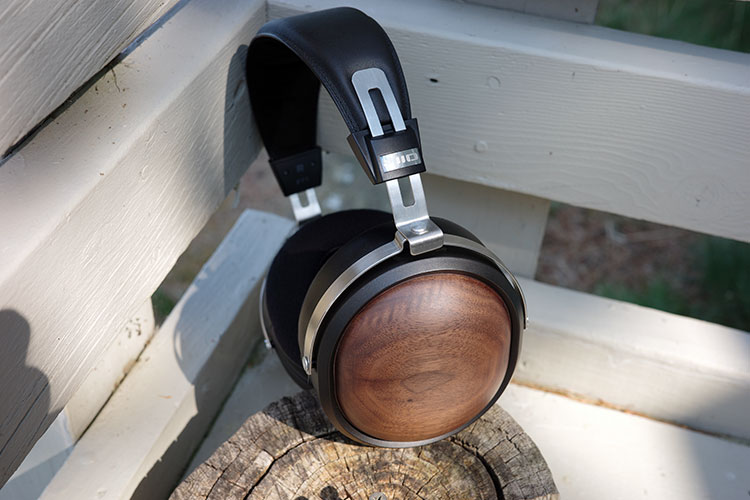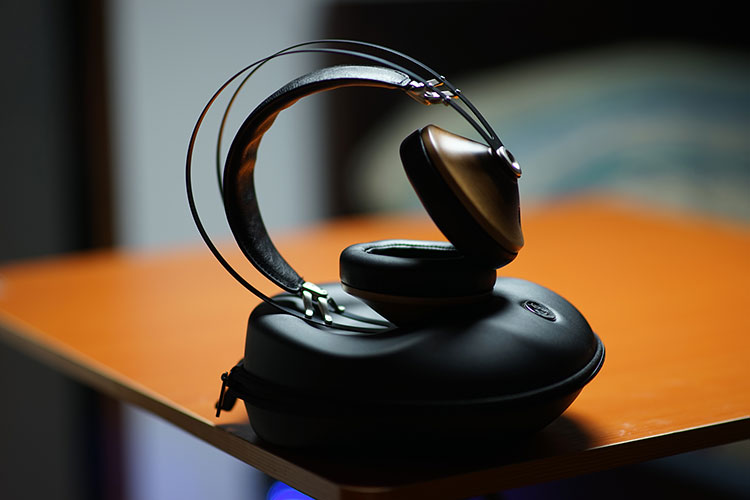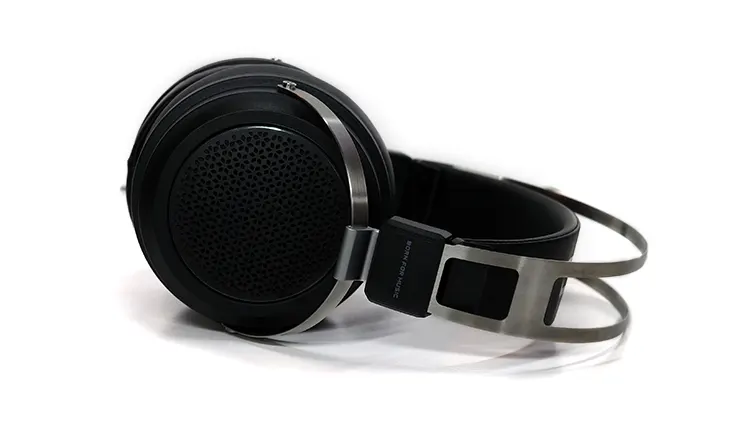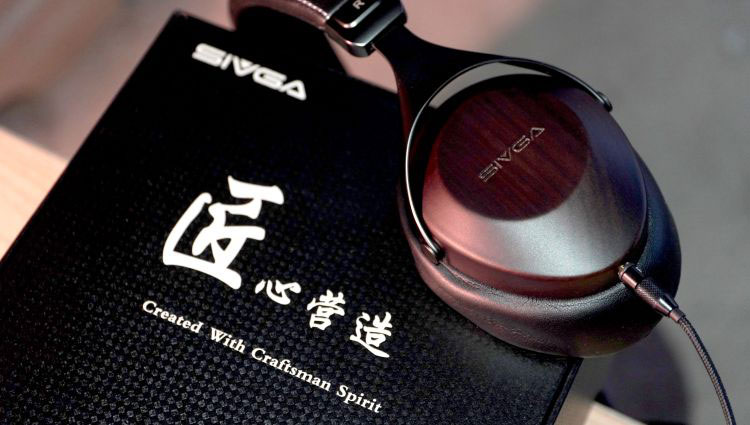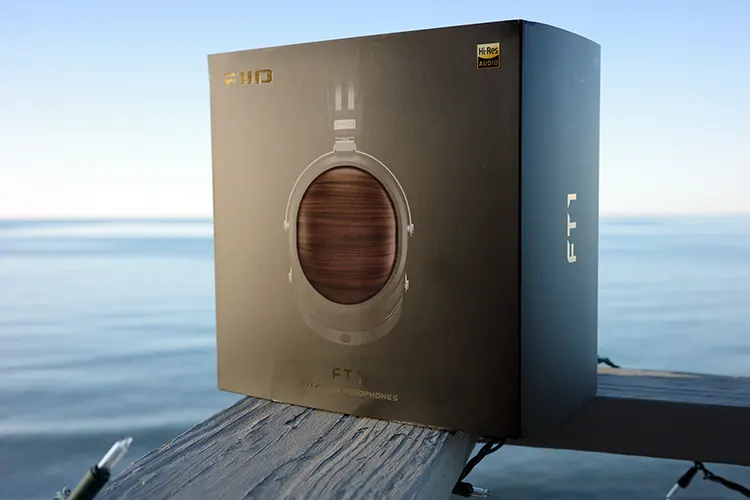Select Comparisons
Meze Audio 99 Classics
Features
The Meze Audio 99 Classics transducer dynamic driver is smaller at 40mm with a sensitivity of 103 dB/mW @1KHz and an impedance of 32Ω making it slightly harder to drive, but only slightly. The 99 Classics is a closed-back set of headphones much like the FT1.
Design
The 99 Classics is included here for a slightly upward look into a closed-back headphone, but also because of the affordability of a secondhand unit.
Attractive in looks and feel, the 99 Classics had stood the test of time with numerous iterations. Light even with the wood ear cups (lighter than the FT1), the Meze is simply stunning in design (to me). Clamp pressure is just right, even with slightly smaller cups than the FiiO FT1.
The sub-suspension band provides just the right amount of pressure and fit. I did note it was slightly lower in tension than the FT1. As a result, the Meze rides further down on my head, with less pressure below the ears, but does not stay in place quite as well as the FT1.
Performance
The Meze Audio 99 Classics’ subdued look belies a presentation that provides less sub-bass than the FT1 but with a smooth texture that is simply sublime.
The mids come across as more in your face than the FT1 and are hindered by that emphasis down low.
The drop at 3kHz makes for a more hollow region than the FT1’s smoothness in the lower mids, while the spike at 10kHz tries to counter that hole higher up. It does so well, sounding more musical than the FT1 overall.
A more U-shaped signature emanates from the FiiO FT1, which in this comparison is not bad. While there is no spikiness, there isn’t a piercing sound like the Meze can have through the mid-treble to upper-treble region.
While not out of character in the Meze tuning, I did find myself reaching to lower the volume when solos came about such as an electric organ, or high guitar licks. Still a “classic,” and worth a look on the secondhand market.
FiiO JT1
Features
The FiiO JT1 employs a 32Ω rated 50mm dynamic driver, based around a PEK+PU+aluminum polymer diaphragm, which makes for low distortion characteristics, while using a brass gasket for quicker musical responses.
The JT1 uses high-performance N52 magnets and a high-tension CCAW voice coil. When combined with the polymer driver diaphragm this purportedly achieves a natural and accurate sound. The average 32Ω impedance means the JT1 is fairly easy to drive.
An OFC copper cable with an inline mic gives the JT1 a slightly warmer presentation.
Design
The JT1 is a closed-back over-ear headphone (just like the FT1) developed with the help of listeners and influencers according to Vincent from FiiO. Looking at many of the current offerings, the focus quickly became a user-friendly and cost-efficient design.
There is a good amount of plastic to the design (as opposed to the metal on the FT1), highlighted by an aluminum yoke leading to a non-adjustable stanchion. Instead of an adjustable stanchion, FiiO uses a two-cabled spring-tensioned setup on the inner headband.
Even while wearing a hat, the inner pleather-covered aluminum “sheet” never contacted the outer band. That band is made of a two-rail flat, stiff aluminum material, which keeps its shape nicely.
The silver/chrome accents carry over to the outer cup surrounds, highlighted by a mesh-patterned backplate, giving the JT1 an elegant, understated look.
Vent holes on top of the cup (just like the FT1) allow for the release of pressure when putting the Jade on, which is good since the ear pads compress readily.
Those cups are easily detachable, using the “old school” slot behind the pad mounting system. This means you could easily change pads to another if you desire, instead of the plastic button-type earpad you might usually find at this level.
At 353 grams, approximately, the JT1 feels light and maneuverable, without feeling cheap. Quality materials help with the feel and look, aided by the lighter weight of the unit.
Performance
An elevated bottom end drops into the mids, smoothly until about 650hz, making bass the highlight, while running deep, but cooling off at that break.
Elevated mids (more so than the FT1) carry the signature forward with a peak at roughly 6kHz, dropping off again and eventually quite steeply at roughly 13kHz.
As a result, the sub-bass is defined but also sounds boomier than the FT1. The dip allows very little bleed into the midsection (less than the FT1), where the building of notes carries slightly forward, but not in a punchy way, instead rather smoothly.
Treble notes carry energy, but the rounding of notes gives the signature a lack of true sparkle in keeping with the warmer signature.
A wide soundstage helps to space notes across the setting but with less depth and height. Out-of-head experiences do occur but seem a bit flattened when only looking at the stage.
Sivga SV021 Robin
Features
SIVGA states that the 50mm dynamic driver inside the Robin SV021 is an in-house production piece. This is still smaller than the FT1’s 60mm dynamic driver.
Not outsourcing to another manufacturer allows Sivga to closely monitor the R&D and QC processes. Keeping the design and build in-house lends itself to some street cred.
The driver of the Robin SV021 is made of a polycarbonate blend with fiber, which the company says helps keep the background noise inaudible when no music or sounds are playing through the headphones. In other words, a black background.
I can attest that this is indeed the case. The headphones are quite quiet for a budget-tier closed-back headphone.
The driver is 3mm thick, adding strength to the material and robustness to the performance and driving potency. The inner wiring is made of copper composite material and aluminum. The diaphragm is also made in-house.
Design
The Robin SV021 is a closed-back wooden cup design, allowing little sound to leak into your listening experience. That exterior cup housing is made of gorgeous rosewood on the lighter-colored tan model.
The darker model color option is less lacquered in appeal. Both colors of wood are stunning regardless of choice.
The Robin SV021 headband is made of protein leather, along with the earpads, and underneath lays a nice metal band and connection pieces.
The headphones are well constructed and feel premium in the hand (much like all Sivga models) for only $149. The headphones also use detachable dual entry 2.5mm cable sockets.
Performance
The Robin SV021’s low-end appeal is one of variety. You get some solid oomph down low that can be boosted slightly with proper EQ but do not expect basshead levels.
It is suited for the task and perfect for budget-conscious audio enthusiasts to look awesome on a video call with good voice bass depth during the call. Everyone knows video call quality is not great, so having a little extra heft on the low end helps.
The Robin SV021 is not what I would call forward-sounding in the physical presentation. I’d call it relaxed and a bit recessive, but the entire spectrum is recessive thankfully, not just the mids.
This is counter to the smooth nature of the FT1, which also boasts more bass and mids that promote a euphonic response.
The Robin SV021 is not V-shaped at all, so that is a good thing. It is a mellow setup that is not overly distant or forward and in-your-face sounding. This physicality factor is great for live recordings and ideal for podcasts and gaming.
My Verdict
Many headphones have an upscale look. Many headphones also can carry a sound that belies their position. The FiiO FT1 embodies both statements, melding into a smooth signature closed-back set of headphones.
Minor fit adjusting quibbles aside, the long-term wearing capability far overshadowed this, making long listening sessions possible. I was never left wanting more comfort during those long sessions, which is a definite positive.
With a competitive and enjoyable sound signature, the FiiO FT1 is a thoroughly impressive set of closed-back dynamic driver headphones considering its affordable price point. It is an excellent complement to the already decent JT1.
FiiO FT1 Technical Specifications
- Driver: 60mm dynamic driver
- Frequency response: 10Hz-40kHz
- Sensitivity: 113 dB/Vrms at 1kHz (98dB/mW at 1kHz)
- Impedance: 32Ω
- Cable: 1 x SE 392 silver-plated oxygen-free-copper, 2m
- Cable: 1 x balanced 392 silver-plated oxygen-free-copper, 2m

